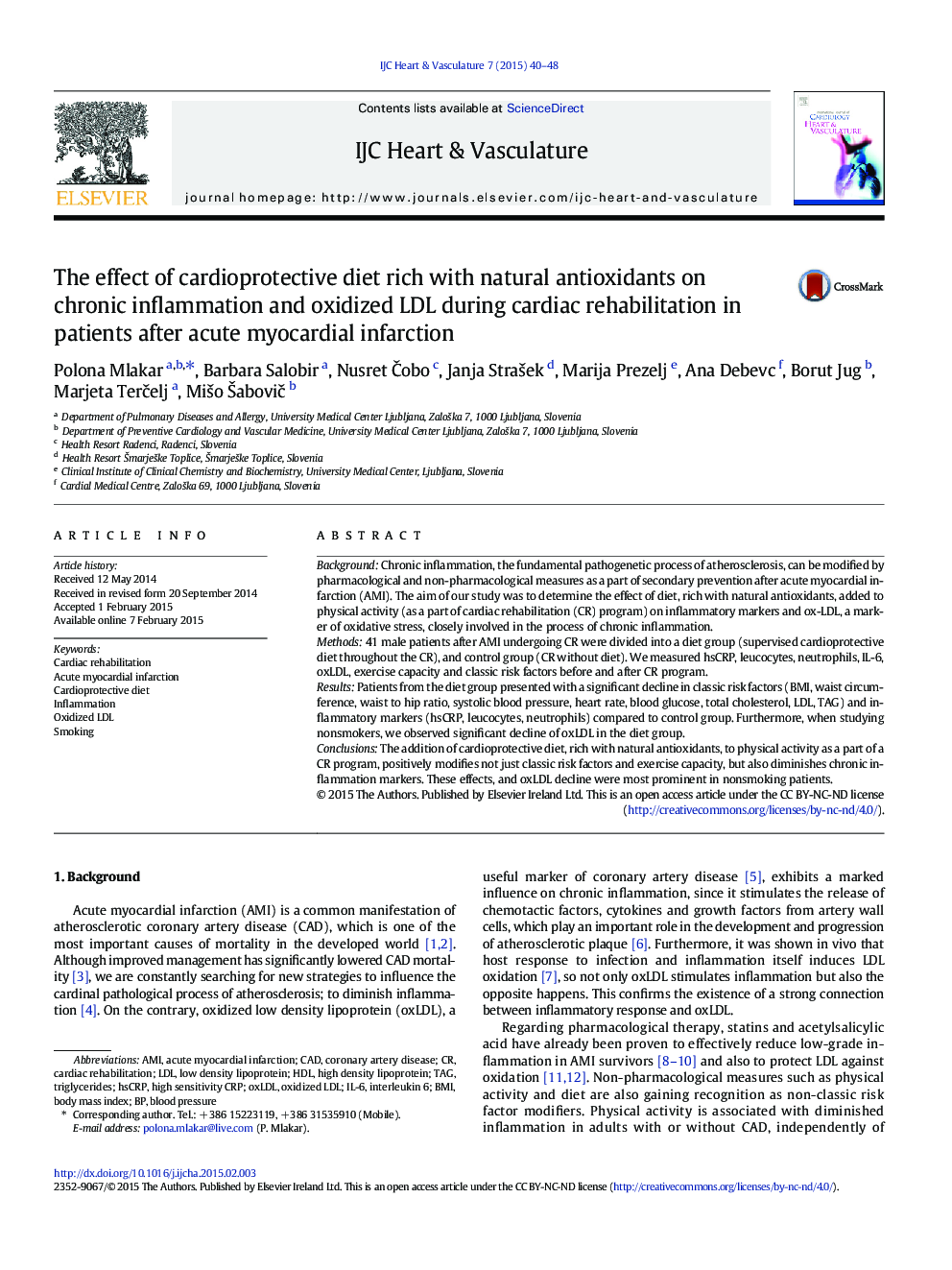| Article ID | Journal | Published Year | Pages | File Type |
|---|---|---|---|---|
| 2927021 | IJC Heart & Vasculature | 2015 | 9 Pages |
BackgroundChronic inflammation, the fundamental pathogenetic process of atherosclerosis, can be modified by pharmacological and non-pharmacological measures as a part of secondary prevention after acute myocardial infarction (AMI). The aim of our study was to determine the effect of diet, rich with natural antioxidants, added to physical activity (as a part of cardiac rehabilitation (CR) program) on inflammatory markers and ox-LDL, a marker of oxidative stress, closely involved in the process of chronic inflammation.Methods41 male patients after AMI undergoing CR were divided into a diet group (supervised cardioprotective diet throughout the CR), and control group (CR without diet). We measured hsCRP, leucocytes, neutrophils, IL-6, oxLDL, exercise capacity and classic risk factors before and after CR program.ResultsPatients from the diet group presented with a significant decline in classic risk factors (BMI, waist circumference, waist to hip ratio, systolic blood pressure, heart rate, blood glucose, total cholesterol, LDL, TAG) and inflammatory markers (hsCRP, leucocytes, neutrophils) compared to control group. Furthermore, when studying nonsmokers, we observed significant decline of oxLDL in the diet group.ConclusionsThe addition of cardioprotective diet, rich with natural antioxidants, to physical activity as a part of a CR program, positively modifies not just classic risk factors and exercise capacity, but also diminishes chronic inflammation markers. These effects, and oxLDL decline were most prominent in nonsmoking patients.
